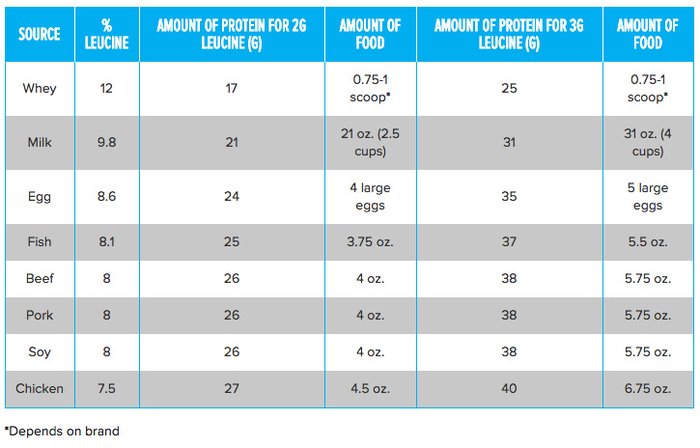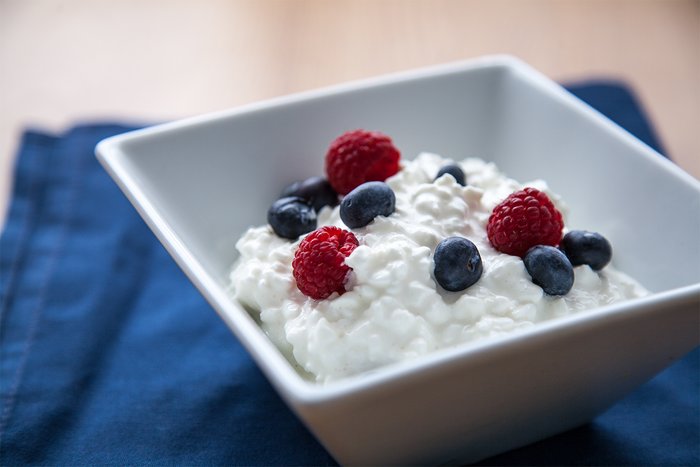Main | The Top 3 Supplements For Gaining Mass | Your 4-Step Nutritional Gainz Plan | Your 4-Week Plan For Guaranteed Muscle Growth!
Anthony "Ant Gainz" LaVigne has put together a high-volume training program from hell. With hundreds of reps, multiple dropsets, pre-exhaust, and an all-out 35-repetition burnout, it will leave you feeling wrecked—especially if you're not eating right. If you want to reap the "get big" benefits of this muscle-building blitz, buckle up and make sure every meal and scoop of powder is dialed in and intentional.
Step one: eat enough, period. You simply must be eating more calories than you burn—and you'll be burning plenty with these workouts. So use a macro calculator, and fearlessly click "Muscle Gainz" under the goal tab.
I know, it feels risky. But you won't put on enough body fat in a month to matter on this plan. You'll be working so hard, you'll burn through calories like a raging inferno.
Once you've got that dialed in, follow these four rules and you'll be ready to explode.
Rule 1: Evenly Distribute Your Protein Intake Throughout the Day
Each day you do LaVigne's workout, aim to consume at least 1 gram of protein per pound of body weight. Pay special attention to how you distribute your daily protein intake throughout the day.
To maximize the muscle growth and repair response from dietary protein, you have to consume a minimum amount every few hours. Pay particular attention to the amount of the branched-chain amino acid leucine you consume.
Leucine is a component of the protein you eat, and it's responsible for triggering muscle growth and repair at the cellular level. Most people need to consume at least 2-3 grams of leucine per meal, an amount referred to as the "leucine threshold," to maximize muscle growth. This usually translates to 25-35 grams of high-quality protein every few hours.
Amount of Protein Needed for 2-3 Grams of Leucine

Make sure that as often as possible, these 25-35 grams of protein per meal come from complete, high-quality proteins that contain all nine of the essential amino acids. Meat, eggs, dairy, soy, and even quinoa all provide your body with the amino acids it needs to optimize muscle growth and recovery.
Let's say your goal is to get 30 grams of protein per meal, and your dinner menu for the night includes chicken with rice, broccoli, and almonds. Count only the high-quality protein in your chicken breast. Don't include the protein you'll get from the broccoli, brown rice, and almonds, which might include as much as 10 grams of protein. You want the full 30 grams to come from a high-quality source. During a bulking phase, that other protein is just gravy (well, not literally).

Rule 2: Eat Every Few Hours
To get all the calories you need, don't rely heavily on liquid calories in the form of shakes and powders.
"Get the majority of your nutrition from whole foods, because whole foods give you the energy and nutrients needed to get though demanding workouts," LaVigne says.
If your goal is 3,600 calories each day, you could eat six 600-calorie meals or three 1200-calorie meals. Eating the six smaller meals will help ensure you can comfortably take in the fuel you need. Eating three immense meals will just make you miserable.
Here's another way to think of it: The muscle-growth response from eating protein lasts about three hours. By eating every few hours, you can provide your muscles with a nearly constant supply of the nutrients they need to grow. By maximizing this muscle-growth response six times a day instead of only once or twice, you create the conditions for maximum hypertrophy more often.
Rule 3: Drink Carbohydrates During Your Workout
LaVigne's workouts combine high-volume and high-intensity techniques to break down every last muscle fiber in that day's target area. If you want to be able to get through the workout and still have the mental and physical fuel to tackle his infamous 35-rep burnout set at the end, you've got to be very well fueled.
This workout will drain your glycogen (carbohydrate) stores. If you haven't refueled them throughout your workout, you'll feel as if you're running on empty as you near the 60-minute mark. Lack of adequate fuel will compromise your intensity, reduce your total volume, and deprive you of optimum muscle growth.
By sipping on a fast-digesting liquid carbohydrate during your workout, you can provide your body with a readily available fuel supply that spares muscle glycogen. These carbs will help you avoid that empty-tank feeling so you can finish your workout with almost the same intensity you started with. Even more, sipping on carbohydrates during your workout will enhance focus and reduce muscle breakdown to improve recovery.
When you make your workout shake, pay attention to the amount of fluid you use versus the amount of carbs. For every 15 grams of carbohydrates, make sure you have 8 ounces of fluid. Making your shake too diluted or too concentrated can impair digestion and absorption, leading to under-fueled workouts and sick stomachs.
For more information on the benefits of drinking carbohydrates during your workout, check out my article "Your Guide to Intra-Workout Carbohydrates."
Rule 4: Eat A High-Protein Bedtime Meal
When you finish your dinner by 6:30 p.m. and don't eat again until breakfast, you may go nearly 12 hours (or more) without food. All of these hours without fuel mean you'll spend significant time in what is known as a catabolic state, during which your body will break down more protein than it's building. This is the enemy of muscle growth.
To reduce the time spent in a catabolic state, eat a protein-rich bedtime meal. In 2016, a review on pre-sleep protein feeding concluded that, "at least 40 grams of dietary protein should be ingested prior to sleep to elicit a robust stimulation of muscle protein synthesis rates throughout the night."[2]

{{caption}}
Some bodybuilding diehards will buy tubs of slow-digesting casein protein for the night, and whey for the day. There's nothing wrong with this approach, but it's definitely not the only route. A little cottage cheese—which is largely casein protein—plus a scoop of whey will be more than adequate to hit the 40-gram threshold.
If you want to make sure you're supporting muscle growth and recovery all the time, make sure you consume all the high-quality protein you need from the first meal of the day through the final one.
Main | The Top 3 Supplements For Gaining Mass | Your 4-Step Nutritional Gainz Plan | Your 4-Week Plan For Guaranteed Muscle Growth!
References
- Kinsey, A. W., & Ormsbee, M. J. (2015). The health impact of nighttime eating: old and new perspectives. Nutrients, 7(4), 2648-2662.
- Trommelen, J., & van Loon, L. J. (2016). Pre-Sleep Protein Ingestion to Improve the Skeletal Muscle Adaptive Response to Exercise Training. Nutrients, 8(12), 763.


